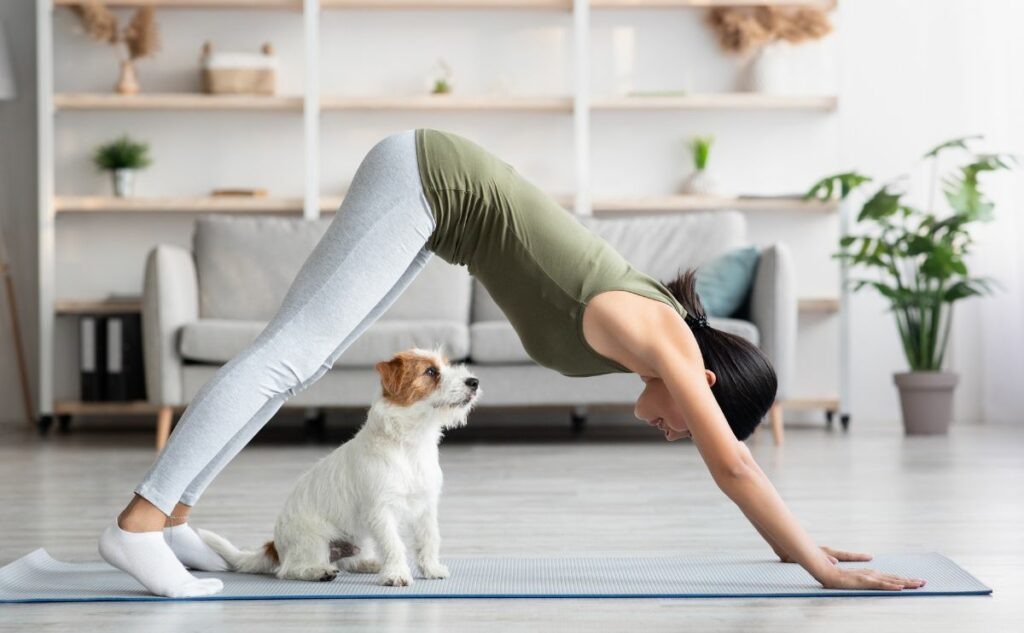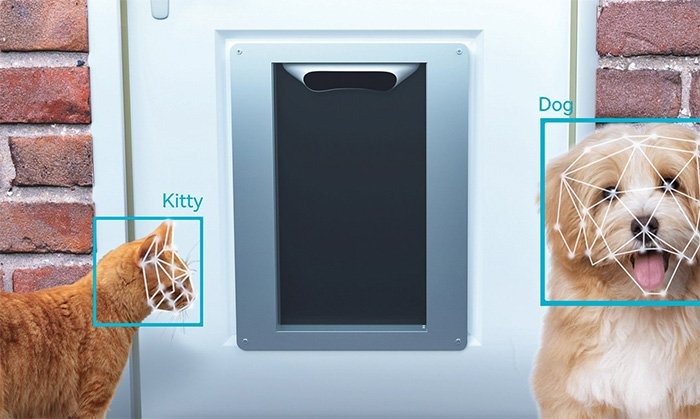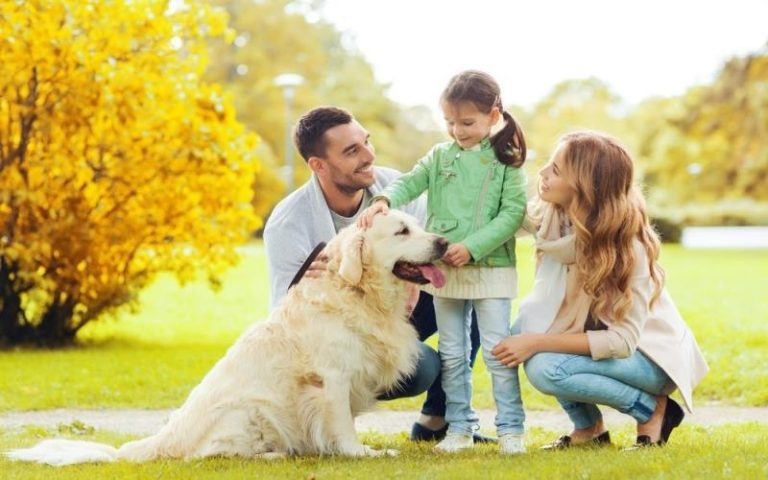
Pet Fitness Trends* – Yoga with dogs, treadmills for cats.
“Explore the innovative world of pet fitness, where yoga sessions with dogs, treadmills for cats, and smart exercise tools are transforming how pets stay active. From physical health to mental stimulation and emotional bonding, these modern trends reflect the growing humanization of pets, ensuring they live healthier, happier, and more fulfilling lives alongside their owners.”
🐶 Pet Star
51 min read · 15, Sep 2025

Introduction
The relationship between humans and their pets has evolved dramatically in the last few decades. Once, pets were simply seen as companions or even protectors, but today they are considered part of the family. With this shift, their health and fitness have become an equally important concern for pet parents. Just as humans have embraced fitness fads, diet plans, and wellness regimens, the pet industry has mirrored these changes by developing fitness solutions for animals. From dog yoga classes (“doga”) to cat treadmills, pet fitness is no longer limited to long walks or chasing toys—it has become an entire lifestyle trend.
In this article, we’ll dive deep into the emerging world of pet fitness, exploring how activities like yoga with dogs and treadmills for cats are shaping modern pet care. We’ll discuss the origins of these practices, their benefits, the science behind them, and the way forward for fitness in the pet industry.
1. The Evolution of Pet Fitness
Traditionally, pet fitness revolved around simple exercise routines: dogs would go for daily walks, play fetch, or run in open fields, while cats stayed active by climbing, hunting, or engaging in play with household toys. However, as urbanization increased, pets began living in smaller homes or apartments, with limited access to open spaces. At the same time, the lifestyle of pet parents became busier and more sedentary, which meant pets were not getting the level of physical activity they needed.
Veterinarians began noticing a rise in obesity-related illnesses in pets, including diabetes, joint problems, and heart disease. This gave birth to a new wave of structured fitness activities for animals—borrowing techniques from human wellness practices. As a result, fitness regimens such as yoga with pets, agility courses, swimming sessions, and even pet-specific gyms became popular.
2. Yoga with Dogs (Doga): Blending Mindfulness with Movement
Origins of Doga
The concept of yoga with dogs—or “doga”—emerged in the early 2000s, pioneered by yoga instructors in the United States who noticed their dogs trying to mimic poses or join them on the mat. It quickly grew into a trend, gaining traction among wellness enthusiasts and pet parents alike.
How Doga Works
- In doga sessions, dogs and owners practice yoga together.
- Dogs may participate by sitting on or beside their owners during poses.
- Some poses involve gently stretching or massaging the dog.
- Breathing exercises are performed with pets resting calmly next to their humans.
Benefits of Doga
- Physical Health for Dogs: Stretching improves flexibility, joint health, and muscle tone.
- Stress Reduction: Dogs are sensitive to human emotions, and calming practices like yoga help them feel relaxed.
- Bonding: Sharing mindful activities strengthens the bond between dog and owner.
- Socialization: Group doga classes provide opportunities for dogs to interact with other pets in a controlled, calm setting.
Scientific Perspective
Research has shown that interacting with pets reduces cortisol (stress hormone) levels and increases oxytocin (the “love hormone”). Combining this with yoga’s established benefits creates a synergistic effect for both species.
Popularity
Today, doga studios exist worldwide, and online platforms provide virtual sessions, making it accessible even for pet parents at home.
3. Treadmills for Cats: Keeping Felines Fit Indoors
Why Cats Need Fitness Solutions
Unlike dogs, cats are often kept indoors for safety, but this limits their natural instincts to run, climb, and hunt. Indoor cats, especially, are prone to weight gain, which can shorten their lifespan.
Introduction of Cat Treadmills
To address this, companies began designing cat exercise wheels and treadmills—similar to hamster wheels but large and safe enough for felines. These devices provide cats with the opportunity to run freely, even within small apartments.
How They Work
- Cat treadmills are typically large, sturdy wheels that rotate as the cat runs.
- Some models come with interactive toys or digital tracking apps to measure activity levels.
- Training often involves using treats or toys to encourage cats to use the treadmill.
Benefits of Cat Treadmills
- Weight Management: Helps prevent obesity-related illnesses.
- Mental Stimulation: Running satisfies natural predatory instincts.
- Longevity: Improves overall cardiovascular health.
- Energy Release: Prevents destructive behaviors caused by boredom.
Challenges
- Not all cats take to treadmills immediately—it requires patience and positive reinforcement.
- The equipment can be costly compared to traditional cat toys.
Trends in Cat Fitness Tech
The pet industry is now integrating smart technology into treadmills, including fitness trackers, gamification, and app-controlled features that allow owners to monitor their cats’ progress.
4. Broader Pet Fitness Trends
While doga and treadmills are headline trends, other innovative approaches are shaping the pet fitness world:
- Pet-Friendly Gyms and Spas: Gyms now offer swimming pools, obstacle courses, and hydrotherapy for dogs.
- Wearable Fitness Trackers for Pets: Devices like FitBark or Whistle track daily steps, calories, and even sleep quality.
- Pet Agility Sports: Training pets in obstacle courses boosts both physical and mental agility.
- Interactive Tech Toys: Smart balls, laser pointers, and robotic toys engage pets while owners are away.
- Nutrition and Fitness Integration: Specialized diets paired with fitness plans help maintain ideal weight.
5. The Humanization of Pet Wellness
Pet fitness trends reflect a larger cultural phenomenon: the humanization of pets. Pet parents now view their animals as family members deserving the same level of care, attention, and wellness support. Just as humans embrace yoga, gyms, or wearable fitness trackers, pets now have similar options tailored to their needs.
Social media has further fueled these trends. Instagram and TikTok are filled with videos of dogs performing yoga poses with their owners or cats running energetically on treadmills, inspiring millions of pet parents to try the same.
6. The Future of Pet Fitness
Looking ahead, we can expect:
- AI-driven fitness apps that recommend daily exercise routines for pets based on age, breed, and health.
- Virtual doga sessions powered by AR/VR technologies.
- Eco-friendly treadmills designed with sustainable materials.
- Community fitness programs where pets and owners join group challenges.
The integration of technology, wellness, and veterinary science will only strengthen the importance of structured fitness in pets’ lives.
In today’s fast-paced world, pets are no longer just companions but cherished members of the family, and just as humans focus on health, diet, and fitness, pet owners are now increasingly concerned about keeping their furry friends fit and active, which has given rise to some of the most fascinating and unconventional trends in the pet wellness industry, including yoga with dogs, popularly called “doga,” and treadmills designed specifically for cats. The concept of structured pet fitness is relatively new; historically, exercise for pets simply meant daily walks for dogs or letting cats roam freely outdoors to chase, climb, and hunt, but with urbanization, smaller living spaces, and busier lifestyles, pets often miss out on the natural exercise they once had, leading to rising cases of obesity, diabetes, joint problems, and heart conditions among domesticated animals. This prompted innovators, veterinarians, and wellness experts to look for creative ways to integrate physical activity into pets’ daily lives, and what emerged was nothing short of revolutionary, as pet fitness began mirroring human fitness in methods, tools, and philosophies. Doga, for instance, originated in the early 2000s when yoga instructors noticed their dogs imitating poses or seeking closeness during practice, and what began as an experiment soon evolved into structured classes where dogs and humans share the mat, with dogs either resting beside their owners, being gently stretched in safe poses, or simply soaking in the calmness of breathing exercises. The benefits are multidimensional: physically, doga helps dogs improve flexibility, muscle tone, and joint health, while mentally, it reduces anxiety and stress, and emotionally, it fosters a deeper bond between owner and pet, which is crucial since dogs are highly sensitive to their humans’ energy. Science supports these outcomes as well—studies show that spending mindful, calm time with pets lowers cortisol (stress hormone) levels while boosting oxytocin (the love hormone), making doga not just a fitness routine but a therapeutic experience for both species. On the other hand, cats, being more independent and often confined indoors for safety reasons, face unique challenges when it comes to fitness, since their natural instincts to run, chase, and climb are restricted within the walls of a home, which can lead to lethargy and unhealthy weight gain; this is where treadmills for cats—or large, sturdy exercise wheels—step in as game changers, offering cats a chance to burn energy, stimulate their predatory instincts, and maintain cardiovascular health, all while staying indoors. Training cats to use treadmills may require patience, with treats, toys, or interactive play used to encourage them, but once they adapt, the benefits are undeniable, including improved weight management, reduced destructive behavior caused by boredom, and enhanced mental stimulation. Some advanced models now even incorporate smart technology, such as fitness tracking apps, gamification features, or integration with wearable pet trackers, allowing owners to monitor progress and stay engaged with their pets’ fitness journeys. Beyond doga and cat treadmills, the broader pet fitness landscape has exploded with innovation, from gyms and spas designed for dogs, offering swimming pools, obstacle courses, and hydrotherapy, to wearable devices like FitBark and Whistle that track steps, calories burned, and even sleep quality, to interactive toys powered by AI that keep pets entertained when owners are away, all reflecting the cultural shift toward the humanization of pets, where pets are no longer seen as animals but as family members deserving the same level of health and wellness care as humans. Social media platforms like Instagram and TikTok have further fueled this movement, with countless videos of dogs holding yoga poses beside their owners or cats sprinting gracefully on treadmills going viral, inspiring millions of pet parents to invest in these practices. The industry’s growth also reflects changing priorities in society, where wellness is holistic and extends to every member of the household, furry ones included. Looking toward the future, experts predict even more advanced integrations, such as AI-driven apps that customize exercise routines for pets based on breed, age, and medical history, eco-friendly fitness equipment made from sustainable materials, and virtual or AR-powered doga sessions that connect pet owners worldwide. At its core, however, the rise of pet fitness trends like doga and cat treadmills is about more than technology or novelty—it is about responsibility, compassion, and the desire to give pets the longest, healthiest, and happiest lives possible, because just as humans need movement, mindfulness, and stimulation, so too do our pets, who depend on us for their well-being. In conclusion, yoga with dogs and treadmills for cats may sound like quirky fads on the surface, but in reality, they represent a deeper cultural and scientific shift toward understanding the needs of animals, blending ancient wellness practices with modern innovation to create healthier lifestyles for pets. By embracing such trends, pet parents not only safeguard the physical health of their companions but also strengthen the emotional bond they share, ensuring that their beloved animals live vibrant, fulfilling lives in an increasingly sedentary and digital world.
Pets have always held a special place in human lives, but in recent years their role has shifted from being just companions or protectors to becoming cherished family members, and with this shift has come a new wave of awareness about their health, fitness, and emotional well-being, leading to fascinating trends like yoga with dogs—popularly known as “doga”—and treadmills specifically designed for cats, both of which are transforming the way pet parents approach exercise and bonding with their furry friends. Traditionally, fitness for pets meant simple daily walks for dogs or letting cats chase toys and climb trees, but with urbanization, smaller apartments, and increasingly sedentary lifestyles among owners, many pets have become less active, resulting in alarming rises in obesity, diabetes, heart disease, and joint problems, forcing veterinarians and wellness experts to stress the need for structured pet fitness programs that go beyond occasional playtime. Out of this necessity, creative solutions emerged, blending human wellness practices with pet care, and the results are both effective and heartwarming. Doga, for example, first appeared in the early 2000s when yoga instructors noticed their dogs trying to imitate movements or join them during practice, and what started as a playful experiment quickly turned into a formalized practice embraced by wellness communities worldwide, with specialized classes now offered in many cities and online platforms making it accessible to anyone with a mat and a dog. The process is simple yet profound: dogs may lie quietly beside their owners during meditation, be gently stretched in safe poses, or actively participate in movements that enhance flexibility, balance, and bonding, and the benefits extend beyond the physical, as doga reduces stress, improves joint health, enhances circulation, and nurtures the human-animal connection through shared calmness and mindfulness. Science reinforces these outcomes, as studies reveal that interacting with pets reduces cortisol, the stress hormone, while increasing oxytocin, the so-called love hormone, creating a mutual cycle of relaxation and trust that makes doga as beneficial for humans as it is for dogs. On the feline side of the fitness spectrum, treadmills or large running wheels designed specifically for cats have gained attention as practical solutions for indoor pets who lack the opportunity to exercise naturally by running or hunting outdoors, and while many cat parents were initially skeptical about whether their independent felines would embrace such equipment, success stories have multiplied, showing cats not only adapting to treadmills but eagerly running on them to release pent-up energy. Cat treadmills are built with safety in mind, offering sturdy designs that rotate smoothly as the cat runs, and some advanced versions include interactive features like toys or digital tracking apps that allow owners to monitor activity levels, track calories burned, and ensure their pets are meeting fitness goals. The benefits of these treadmills are extensive: they help manage weight, reduce the risk of obesity-related illnesses, satisfy hunting instincts, prevent destructive behavior caused by boredom, and improve overall cardiovascular health, ultimately leading to longer, healthier lifespans for indoor cats. Training, however, requires patience and positive reinforcement, with owners often using treats, toys, or gentle encouragement to introduce their cats to the equipment gradually, and while the initial investment in such devices can be higher than traditional toys, many pet parents consider it a worthwhile expense compared to long-term veterinary bills caused by obesity or inactivity. Beyond doga and treadmills, the broader landscape of pet fitness is thriving with innovations that mirror human wellness trends, such as dog-friendly gyms and spas offering swimming pools, hydrotherapy, and agility courses; wearable fitness trackers like FitBark or Whistle that monitor steps, sleep, and calories; and interactive robotic toys that entertain and stimulate pets while owners are at work, all reflecting the growing phenomenon of the humanization of pets. In fact, one of the biggest cultural drivers behind these trends is the idea that pets deserve the same care and quality of life as humans, and social media has amplified this philosophy, with Instagram and TikTok filled with viral videos of dogs stretching gracefully alongside their owners or cats sprinting happily on treadmills, inspiring millions of pet parents worldwide to adopt similar routines. The pet fitness industry itself has become a booming market, with wellness-focused products and services driving billions in revenue, signaling not just a passing fad but a fundamental shift in how society perceives animal care. Looking to the future, experts predict even more integration of technology and fitness, including AI-powered apps that generate customized daily exercise plans for pets based on breed, age, and health history; eco-friendly treadmills made with sustainable materials; and even AR or VR-powered doga sessions that allow owners and pets to join global wellness communities from their living rooms. Yet, despite the technological advancements, the essence of these trends lies in the timeless values of love, care, and connection, because at its heart, pet fitness is not only about burning calories or preventing disease but about ensuring that our beloved animals live fulfilling, happy lives while sharing in the mindfulness and wellness journeys of their humans. Thus, yoga with dogs and treadmills for cats, while sounding quirky on the surface, are actually meaningful representations of a deeper cultural and scientific understanding of animal well-being, blending ancient practices like yoga with modern innovations like smart exercise wheels to create a holistic approach to pet health. In conclusion, these trends embody the growing commitment of pet parents to treat their pets not as accessories or dependents but as family members deserving of the same attention to fitness, mental health, and emotional bonding, ensuring that in an increasingly urbanized and digital world, our furry companions not only survive but thrive alongside us, enjoying longer, healthier, and more vibrant lives filled with activity, connection, and joy.
Conclusion
Pet fitness has evolved from simple walks and play to structured, innovative activities such as yoga with dogs (doga) and treadmills for cats. These practices are more than just fads; they represent a growing awareness of the importance of keeping pets healthy, mentally stimulated, and emotionally connected to their humans.
- Doga blends mindfulness with bonding, reducing stress and improving flexibility for both dogs and owners.
- Cat treadmills offer a much-needed solution for indoor cats, helping them maintain weight, release energy, and stay mentally active.
- Broader fitness trends—from pet gyms to wearable trackers—reflect the humanization of pet wellness, where pets are treated with the same care as human family members.
As technology continues to merge with pet care, the future will likely bring even more personalized and advanced fitness solutions for pets. Ultimately, these trends ensure that our beloved companions live longer, healthier, and happier lives.
Q&A Section
Q1: What is doga, and how does it benefit dogs?
Ans: Doga is yoga practiced with dogs, where owners perform poses with their pets by their side or gently stretching them. It benefits dogs by improving flexibility, reducing stress, enhancing bonding, and providing socialization opportunities.
Q2: Are cat treadmills safe for all cats?
Ans: Yes, cat treadmills are generally safe if properly designed. However, they require supervision, gradual training, and positive reinforcement. Some cats may take time to adjust to the equipment.
Q3: Why is pet fitness important in modern times?
Ans: With urban living and busy lifestyles, pets often lack natural exercise opportunities. Fitness helps prevent obesity, improves health, reduces behavioral issues, and enhances overall well-being.
Q4: Can all dogs participate in doga?
Ans: Most dogs can enjoy doga, but age, temperament, and health conditions should be considered. Senior dogs or those with joint issues may benefit the most from gentle stretching and massage-based poses.
Q5: What role does technology play in pet fitness?
Ans: Technology introduces innovations like smart treadmills, fitness trackers, and interactive toys, enabling owners to monitor and enhance their pets’ activity levels even when they’re not physically present.
Similar Articles
Find more relatable content in similar Articles

Sustainable Pet Products: What to Look for in 2025...
As sustainability becomes a ce.. Read More

Smart Homes for Pets: Automated Feeders, Doors, and Mo..
As smart home technology advan.. Read More

How Pets Strengthen Family Bonds...
Pets are more than just compan.. Read More

How Climate Change Affects Wild and Domestic Animals...
Climate change is dramatically.. Read More
Explore Other Categories
© 2024 Copyrights by rPets. All Rights Reserved.